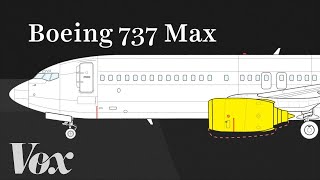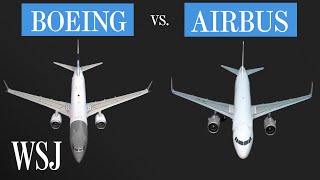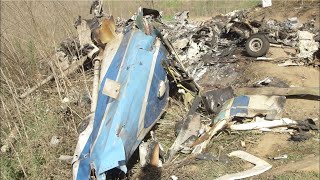Friday, 26 December, 2025г.
















Где искать: по сайтам Запорожской области, статьи, видео ролики
пример: покупка автомобиля в Запорожье
FAA, NTSB Chiefs Testify on Status of Boeing 737 Max Before House Transportation Panel
Boeing Co. has failed to turn over any records to House investigators about the flawed safety feature on the 737 Max implicated in two fatal crashes, a committee chairman said Wednesday as lawmakers grilled U.S. aviation regulators on the jetliner.
Transportation and Infrastructure Committee Chairman Peter DeFazio, an Oregon Democrat, said during a hearing that he hoped the aircraft manufacturer begins complying with requests for data on the plane’s design soon.
DeFazio said he was disappointed that a single sensor’s failure had led to the crashes. “We shouldn’t have to be here today,” DeFazio said as the panel’s aviation subcommittee opened its first hearing into the 737 Max with the chiefs of the Federal Aviation Administration and National Transportation Safety Board as witnesses.
The FAA has come under fire for approving the feature known as the Maneuvering Characteristics Augmentation System, or MCAS, and for giving the planemaker too much authority to regulate the safety of its planes. After a sensor on 737 Max jets in Indonesia and Ethiopia malfunctioned, MCAS continually attempted to make the aircraft dive. Boeing is redesigning the system to make it less prone to operate in error.
Asked for comment on DeFazio’s statement regarding records, Boeing spokesman Charles Bickers said, “Boeing continues to support the ongoing accident investigations and is committed to working closely with Members of Congress, their staff and relevant officials. Safety is our top priority when we design, build, deliver and maintain Boeing aircraft.”
FAA acting chief Daniel Elwell said that the agency was directly involved in approving the flight-control system, participating in a test flight of the system that drove down the nose in the two accidents.
Earlier: Boeing’s Oversight of 737 Max Drew Rebuke of FAA Unions in 2017
“As our work continues, I offer this assurance: In the U.S., the 737 Max will return to service only when the FAA’s analysis of the facts and technical data indicate that it is safe to do so,” Elwell told the House aviation subcommittee.
Elwell was critical of Boeing for not disclosing to the FAA or to airlines for more than a year that a 737 Max display supposed to show whether a sensor was malfunctioning wasn’t functional.
“I think that’s an issue, sir,’’ Elwell said under questioning by DeFazio. “It shouldn’t take a year for us to find out.’’
The FAA has concluded that the so-called angle-of-attack sensor disagree light wasn’t critical to safety.
Elwell faced skeptical questioning from lawmakers. Subcommittee Chairman Rick Larsen, a Washington Democrat, issued a press release Tuesday seeking answers from FAA on the crashes.
“The committee’s investigation is just getting started, and it will take some time to get answers, but one thing is clear right now: The FAA has a credibility problem,” Larsen said.
DeFazio said the committee is still in the early stages of its review of how the plane was certified by FAA. But the tragedies are shocking, including for families of victims, he said.
“They deserve answers and accountability, as does the general flying public,” DeFazio said.
The highest ranking Republican on the committee, Representative Sam Graves of Missouri, urged caution before blaming Boeing for the accidents. In his opening statement, he listed what he called multiple errors by pilots and airline maintenance workers in the accidents that he said should be considered along with Boeing’s design.
“To focus on one single factor misses the forest for trees,’’ Graves said.
National Transportation Safety Board Chairman Robert Sumwalt also testified. The NTSB is assisting Ethiopian and Indonesian authorities in their investigations of the two crashes. Sumwalt said he can’t comment beyond what investigators in those two countries have said under the United Nations treaty governing accident probes.
MCAS was added to the 737 Max to make it less likely to enter an aerodynamic stall. It automatically commands a relatively modest dive if it senses a plane’s nose has gotten too high. In the accidents, it repeatedly pushed down the nose despite efforts by the pilots to counter it. The crashes killed 346 people.
Subscribe to our YouTube channel: https://bit.ly/2TwO8Gm
TICTOC ON SOCIAL:
Follow TicToc on Twitter: https://twitter.com/tictoc
Like TicToc on Facebook: https://www.facebook.com/tictoc
Follow TicToc on Instagram: https://www.instagram.com/tictoc
Watch all of TicToc’s videos: https://www.tictoc.video/
Listen to TicToc’s podcast: https://apple.co/2D3Vta7
Subscribe to our newsletter: https://bit.ly/2FJ0oQZ
TicToc by Bloomberg is global news for the life you lead. We are a 24/7 news network that covers breaking news, politics, technology, business and entertainment stories from around the globe, supported by a network of Bloomberg’s 2,700 journalists across 120 countries.
Теги:
boeing 737 max boeing 737 max plane airplane transit transportation faa federal aviation administration ntsb national transportation safety board safety plane crash boeing crash house congress senate government politics law house committee u.s. news breaking news tictoc tictoc by bloomberg bloomberg live news live news video live video video Daniel Elwell Robert Sumwalt
Похожие видео
Мой аккаунт


 У вашего броузера проблема в совместимости с HTML5
У вашего броузера проблема в совместимости с HTML5


